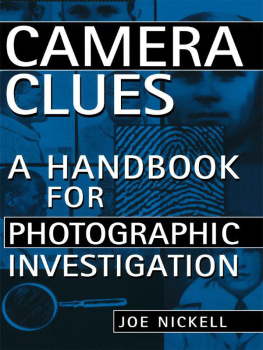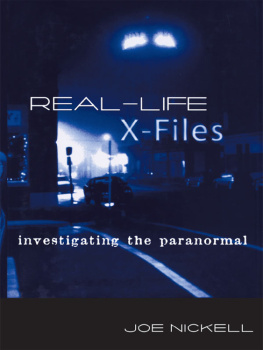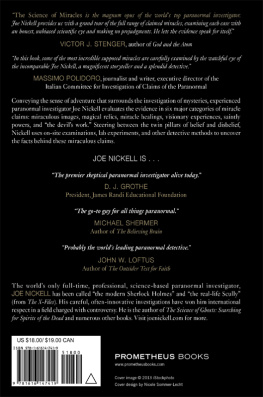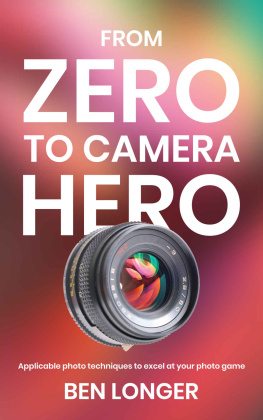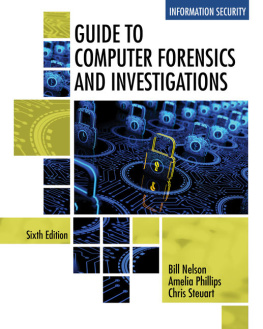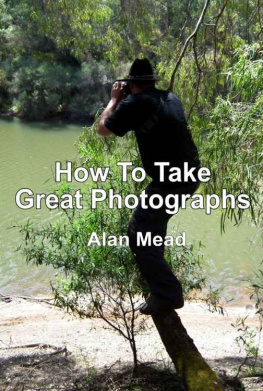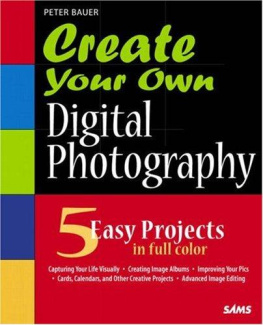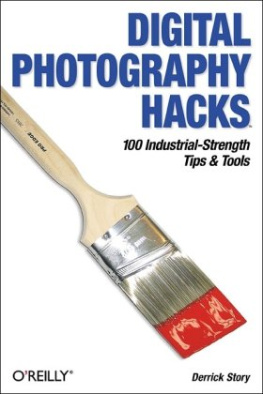Joe Nickell - Camera Clues: A Handbook for Photographic Investigation
Here you can read online Joe Nickell - Camera Clues: A Handbook for Photographic Investigation full text of the book (entire story) in english for free. Download pdf and epub, get meaning, cover and reviews about this ebook. year: 1994, publisher: The University Press of Kentucky, genre: Non-fiction. Description of the work, (preface) as well as reviews are available. Best literature library LitArk.com created for fans of good reading and offers a wide selection of genres:
Romance novel
Science fiction
Adventure
Detective
Science
History
Home and family
Prose
Art
Politics
Computer
Non-fiction
Religion
Business
Children
Humor
Choose a favorite category and find really read worthwhile books. Enjoy immersion in the world of imagination, feel the emotions of the characters or learn something new for yourself, make an fascinating discovery.
- Book:Camera Clues: A Handbook for Photographic Investigation
- Author:
- Publisher:The University Press of Kentucky
- Genre:
- Year:1994
- Rating:4 / 5
- Favourites:Add to favourites
- Your mark:
- 80
- 1
- 2
- 3
- 4
- 5
Camera Clues: A Handbook for Photographic Investigation: summary, description and annotation
We offer to read an annotation, description, summary or preface (depends on what the author of the book "Camera Clues: A Handbook for Photographic Investigation" wrote himself). If you haven't found the necessary information about the book — write in the comments, we will try to find it.
Camera Clues: A Handbook for Photographic Investigation — read online for free the complete book (whole text) full work
Below is the text of the book, divided by pages. System saving the place of the last page read, allows you to conveniently read the book "Camera Clues: A Handbook for Photographic Investigation" online for free, without having to search again every time where you left off. Put a bookmark, and you can go to the page where you finished reading at any time.
Font size:
Interval:
Bookmark:
C AMERA
C LUES
A H andbook for
P hotographic I nvestigation
_________
JOE NICKELL
THE UNIVERSITY PRESS OF KENTUCKY
Copyright 1994 by The University Press of Kentucky
Paperback edition 2005
The University Press of Kentucky Scholarly publisher for the Commonwealth, serving Bellarmine University, Berea College, Centre College of Kentucky, Eastern Kentucky University, The Filson Historical Society, Georgetown College, Kentucky Historical Society, Kentucky State University, Morehead State University, Transylvania University, University of Kentucky, University of Louisville, and Western Kentucky University.
All rights reserved.
Editorial and Sales Offices: The University Press of Kentucky 663 South Limestone Street, Lexington, Kentucky 40508-4008
www.kentuckypress.com
09 08 07 06 05 1 2 3 4 5
The Library of Congress has cataloged the hardcover edition as follows:
Nickell, Joe.
Camera clues : a handbook for photographic investigation / Joe Nickell.
p. cm.
ISBN 0-8131-1894-8 (acid-free paper)
1. Legal photography. 2. PhotographsDating. 3. Photography in historiography. I. Title
TR822.N53 1994
770dc20 94-15623
ISBN 0-8131-9124-6 (pbk: acid-free paper)
This book is printed on acid-free recycled paper meeting the requirements of the American National Standard for Permanence in Paper for Printed Library Materials.

Manufactured in the United States of America.
 | Member of the Association of American University Presses |
I have been assisted by many people with expertise in a wide variety of specialties. In addition to the authors of the various source materials cited throughout the book, I am grateful for the assistance of Tom House, photo-archivist in the Department of Special Collections, King Library, University of Kentucky; my longtime colleague, John F. Fischer, a forensic analyst in a Florida crime laboratory and an experienced crime-scene investigator; and Robert H. van Outer, a professional photographer of Lexington, Kentucky, who has many years experience in most aspects of photographic work and who produced the wonderful illustrations for my Pen, Ink and Evidence.
I am, of course, responsible, ultimately, for any deficiencies. I hope they are few, and that the reader finds this material as interesting and useful as I have in researching it.
P hotography, evolving from tentative experiments beginning about the turn of the nineteenth century, became commonplace by mid-century, andwith the introduction of the Brownie camera in 1900it became widely popular: Practically anyone could capture anything at any time on film. Now, with millions of photographic images being made annually, photography has invaded virtually every area of human activity.
With this proliferation of photos have come attendant mysteriesquestions raised about the date when or conditions under which a given photo was made, about its subject matter or other concerns. Many are historical questions: Could this be a rare portrait of Abraham Lincoln? Who are the people in these old family photographs? When was this view of a certain town made? Does this represent an honest historical document, or was the depicted scene staged? What about this old picture: is it an original or a copy, one made perhaps many years later? Are there clues as to when and where this daguerreotype was taken? And so on and on.
Other questions may be more scientific in nature: Has this picture been retouched? Does that crime-scene photograph distort distances and thus create a false impression? Can particular features in a photo be enhanced? Is it possible to photograph a certain document in such a way as to reveal obliterated writing? Is this photo of a UFO really proof of alien visitation? Could that photo of a ghost actually result from a double exposure? And what about this strange picture: is the odd image some defect of camera or film?
This book attempts to provide answers to such questions, representing a wide-ranging study of photography from an investigative standpoint. On the one hand, I discuss the use of photography in investigative work; on the other, I show how investigative methods are applied to photographs themselves. Appropriate discussions of early photographic processes and other developments and techniques are given. To avoid unnecessarily complicating the text, however, I occasionally refer the readers to a specialized article or textbook for a more in-depth study. Extensive notes, an annotated bibliography at the end of each chapter, and an appendix on the chronology and identification of photos are also intended to help accomplish this goal and to make the text more useful.
Throughout, I also cite numerous case studies not only for their entertainment value but also for the light they shed on how photographic mysteries arise and how investigative strategies may be devised to solve them. Such strategies apply to photographs that may have been deliberately intended to deceive as well as to ordinary snapshots or professional photographs thatthrough the vagaries of time or circumstancehave inadvertently raised questions or become the subject of controversy. Because of the controversy surrounding many sensational photographsfor instance, those alleged to depict American prisoners of war still being held in Vietnam or Cambodia or pictures of the Loch Ness Monsterit is appropriate to discuss briefly some rules of evidence and procedure.
First of all, one should keep in mind the maxim that the burden of proof is always upon the advocate of an ideathat is, in a court of law the plaintiff, or, elsewhere, whoever is the asserter of a fact or the one who advances some hypothesis. A skeptic does not have to prove something is not so, the difficulty of proving a negative being well known. Consider, for example, trying to prove there are no leprechauns in Ireland: whatever contrary evidence you amass, someone can always insist your approach has been inadequate.
One should keep in mind, too, the maxim that extraordinary claims require extraordinary proofthat is, that proof should be commensurate with the degree of remarkableness of the claim being made. For instance, someone entering your home or office with a dripping umbrella and announcing that it is raining outside is naturally accorded more credibility than someone producing an instant-camera snapshot of a flying saucer that is alleged to have just flown by.
Another useful principle is known as Occams razor or the maxim of parsimony. It is often invoked in cases in which more than one hypothesis can account for the known facts. Occams razor holds that the simplest tenable explanationthat is, the hypothesis with the fewest assumptionsis most likely to be correct and is, consequently, to be preferred.
These are only a few general guidelines. More specific rules of evidence and standards of proof may need to be applied depending on the circumstances in a given case. A family historian taking a photo of an ancestors gravestone, for example, is not expected to follow all the guidelines of providing documentation and establishing the chain of evidence that would be required of a forensic expert taking a photograph of a bloodstain at the scene of a homicide.
I point this out because I am hopeful that the books broad scope will make it useful to a wide variety of potential readers: genealogists and family researchers; historians, biographers, and other scholars; reporters; police and private detectives, as well as insurance adjusters and attorneys; scientists; photographers, photo archivists, and collectors of photographs; and, indeed, all who encounter photos in their private or professional livesin a word, everyone!
Next pageFont size:
Interval:
Bookmark:
Similar books «Camera Clues: A Handbook for Photographic Investigation»
Look at similar books to Camera Clues: A Handbook for Photographic Investigation. We have selected literature similar in name and meaning in the hope of providing readers with more options to find new, interesting, not yet read works.
Discussion, reviews of the book Camera Clues: A Handbook for Photographic Investigation and just readers' own opinions. Leave your comments, write what you think about the work, its meaning or the main characters. Specify what exactly you liked and what you didn't like, and why you think so.

